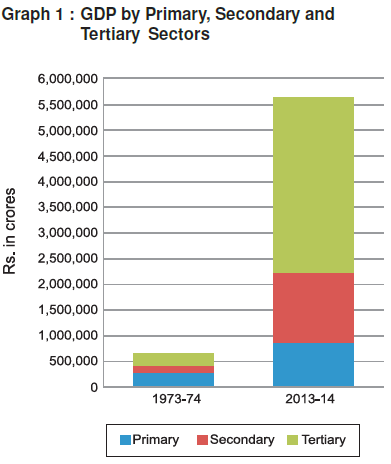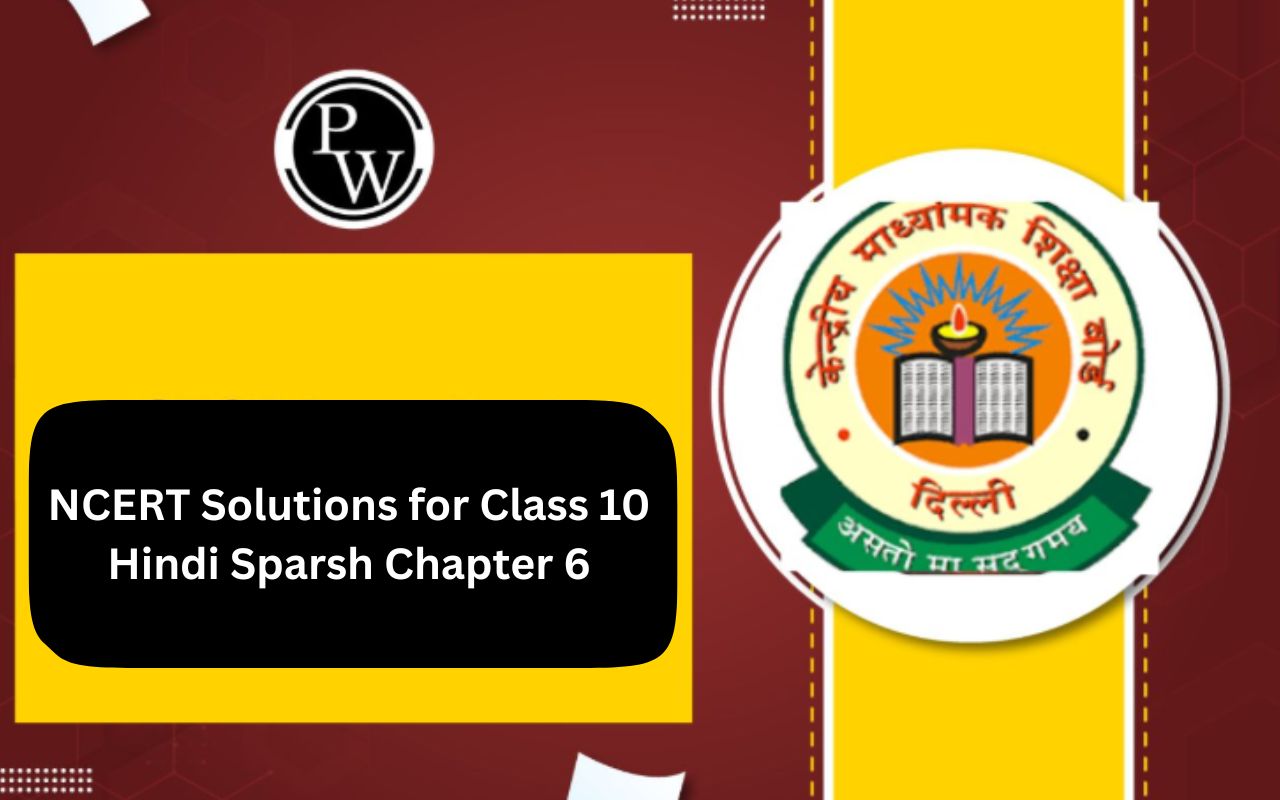
CBSE Class 10 Social Science Economics Notes Chapter 2: Chapter 2 of CBSE Class 10 Economics Chapter 2 Notes is all about the different parts of Sectors Of Indian Economy. We learn about three main parts: primary, secondary, and tertiary sectors. The primary sector includes farming, fishing, mining, and other basic activities.
CBSE Class 10 Social Science Economics Notes
In the secondary sector, we look at industries like manufacturing, which make products from raw materials. Then, there's the tertiary sector, which covers services like banking, transportation, and healthcare. We learn how each sector contributes to the country's economy and provides jobs for people. This chapter helps us understand how these sectors work together and why they are important for India's growth.CBSE Class 10 Economics Chapter 2 Notes
Here are the topics covered in the CBSE Class 10 Social Science Economics Notes Chapter 2 Overview:Primary Sector :
- Definition and significance.
- Activities such as farming, fishing, mining, and quarrying.
- Contribution to GDP and employment.
Secondary Sector :
- Definition and importance.
- Overview of manufacturing industries.
- Contribution to GDP and employment.
Tertiary Sector :
- Definition and role.
- Various service sectors like trade, transport, communication, banking, education, and healthcare.
- Contribution to GDP and employment.
Interdependence of Sectors :
- Understanding how sectors rely on each other.
- Impact of developments in one sector on others.
Employment Generation :
- Role of each sector in creating jobs.
- Challenges and opportunities for employment in different sectors.
CBSE Notes Class 10 Economics Chapter 2 Sectors Of Indian Economy PDF
You can access the CBSE Class 10 Social Science History Notes for Chapter 2 in PDF format through the following link:CBSE Class 10 Social Science History Notes Chapter 2 PDF
CBSE Notes Class 10 Economics Chapter 2 – Sectors of the Indian Economy
Sectors of Economic Activities
A sector is a big part of the economy where businesses do the same kind of work or sell similar products or services.Primary Sector :
In this sector, we get goods by taking out natural resources. Examples are farming, fishing, mining, and cutting trees.Secondary Sector :
This sector changes natural things into different forms through manufacturing. It comes after the primary sector. Here, things are made in factories. For example, cotton from plants is turned into cloth, and sugar is made from sugarcane.Tertiary Sector :
In this sector, activities support the primary and secondary sectors. They don't make goods themselves but help in the production process. This is also called the service sector. For example, teachers, doctors, drivers, bankers, and software companies are part of this sector.Comparing the 3 Sectors :
 The total goods and services made in each sector in a year show how much each sector produces. If we add up what all sectors make, we get the Gross Domestic Product (GDP) of a country. GDP shows how big an economy is. In India, the government measures GDP.
The total goods and services made in each sector in a year show how much each sector produces. If we add up what all sectors make, we get the Gross Domestic Product (GDP) of a country. GDP shows how big an economy is. In India, the government measures GDP.
Where are Most People Employed?
- More than half of the workers in India work in the primary sector, mostly in farming.
- The secondary and tertiary sectors together employ less than half the people.
- But they produce most of the things, around four-fifths.
Read More - Tips to Score 95% in Social Science Class 10 Board Exams
How to Create More Jobs?
- We can create jobs by promoting industries and services in rural areas.
- Tourism, local crafts, and new services like IT can also generate employment.
- The government's law, MGNREGA 2005, guarantees 100 days of work to rural people if they need it.
Division of Sectors as Organised and Unorganised
Organised Sector
- The organised sector has jobs with fixed schedules and stable employment. Workers here have assured work.
- These jobs are regulated by the government. Laws like the Factories Act, Minimum Wages Act, and Payment of Gratuity Act apply to them.
- Workers in this sector usually have regular hours. If they work extra, they get paid for the extra time.
- Employment in the organised sector is secure. Employees can't be fired without a valid reason.
- Workers in this sector enjoy various benefits like paid leave, holidays, and medical coverage. They also have retirement benefits like pensions.
Unorganised Sector
- The unorganised sector consists of small, scattered businesses not regulated by the government.
- Since they're not registered, they don't have to follow government laws and regulations.
- Jobs in this sector are often irregular and low-paying.
- Employment in the unorganised sector isn't secure. Workers can be fired without any reason.
- There are no benefits like paid leave, holidays, or medical coverage in the unorganised sector.
- Examples of the organised sector include government employees, factory workers, and professionals like nurses or teachers. In contrast, the unorganised sector includes jobs like farming, shopkeeping, or domestic work.
| CBSE Class 10 Economics Notes |
| Chapter 1: Development |
| Chapter 2: Sectors of the Indian Economy |
| Chapter 3: Money and Credit |
| Chapter 4: Globalisation and the Indian Economy |
| Chapter 5: Consumer Rights |
Protecting Workers in the Unorganised Sector
- The government can set minimum wages and working hours.
- It can offer cheap loans and basic services like education and healthcare.
- Laws can be made for benefits like paid leave and sick leave.
Sectors in Term of Ownership: Public and Private Sectors
Public Sector
- In the public sector, most assets are owned by the government, and it provides all services.
- Examples include government-run services like railways or the post office.
- The main goal of the public sector is public welfare, not just making profits.
Private Sector
- In the private sector, individuals or companies own assets and provide services.
- Companies like Tata Iron and Steel Company Limited (TISCO) or Reliance Industries Limited (RIL) are examples.
- The main motive of the private sector is to make profits.
Government Responsibilities
- The government raises money through taxes to provide services like roads, electricity, and education.
- It supports farmers by buying their produce at fair prices and selling it at lower prices to consumers.
- Ensuring proper schools, healthcare, and housing for all are also government duties.
CBSE Class 10 Social Science Economics Notes Chapter 2 FAQs
What is the primary sector?
The primary sector involves activities related to the extraction and collection of natural resources. This includes farming, fishing, mining, and forestry.
What is the tertiary sector?
The tertiary sector involves providing services rather than producing goods. It includes activities like banking, education, healthcare, transportation, and communication.
Why are the sectors of the economy important to understand?
Understanding the sectors of the economy helps us grasp how different parts of the economy contribute to overall economic growth and development. It also provides insights into employment patterns and income generation.
What is the difference between the organized and unorganized sectors?
The organized sector consists of registered businesses that follow government regulations regarding employment, wages, and working conditions. In contrast, the unorganized sector comprises small-scale enterprises and informal workers who often lack job security and social benefits.
🔥 Trending Blogs
Talk to a counsellorHave doubts? Our support team will be happy to assist you!

Check out these Related Articles
Free Learning Resources
PW Books
Notes (Class 10-12)
PW Study Materials
Notes (Class 6-9)
Ncert Solutions
Govt Exams
Class 6th to 12th Online Courses
Govt Job Exams Courses
UPSC Coaching
Defence Exam Coaching
Gate Exam Coaching
Other Exams
Know about Physics Wallah
Physics Wallah is an Indian edtech platform that provides accessible & comprehensive learning experiences to students from Class 6th to postgraduate level. We also provide extensive NCERT solutions, sample paper, NEET, JEE Mains, BITSAT previous year papers & more such resources to students. Physics Wallah also caters to over 3.5 million registered students and over 78 lakh+ Youtube subscribers with 4.8 rating on its app.
We Stand Out because
We provide students with intensive courses with India’s qualified & experienced faculties & mentors. PW strives to make the learning experience comprehensive and accessible for students of all sections of society. We believe in empowering every single student who couldn't dream of a good career in engineering and medical field earlier.
Our Key Focus Areas
Physics Wallah's main focus is to make the learning experience as economical as possible for all students. With our affordable courses like Lakshya, Udaan and Arjuna and many others, we have been able to provide a platform for lakhs of aspirants. From providing Chemistry, Maths, Physics formula to giving e-books of eminent authors like RD Sharma, RS Aggarwal and Lakhmir Singh, PW focuses on every single student's need for preparation.
What Makes Us Different
Physics Wallah strives to develop a comprehensive pedagogical structure for students, where they get a state-of-the-art learning experience with study material and resources. Apart from catering students preparing for JEE Mains and NEET, PW also provides study material for each state board like Uttar Pradesh, Bihar, and others
Copyright © 2025 Physicswallah Limited All rights reserved.
Get App









